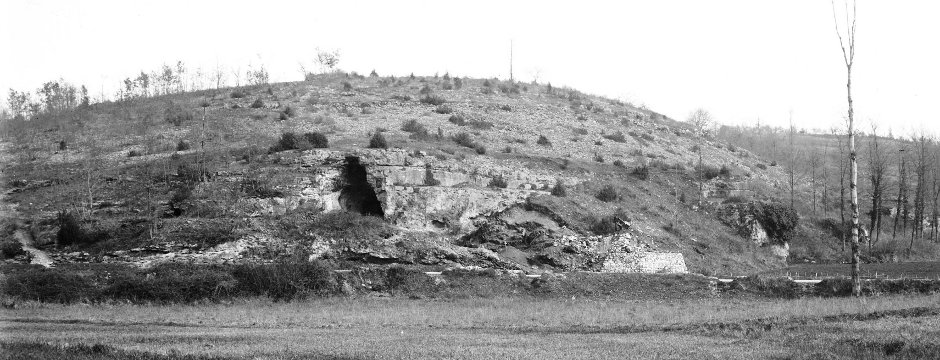
La Ferrassie - Peyrony and Capitan
Peryony and Capitan began work in 1907 in the northwest part of the shelter (center right of photo), and continued, as a series of trenches moving eastward (to the right), until 1922 (with an interruption from 1914 to 1917 due to World War I). In total, their excavation removed approximately 800-1000 cubic meters of sediment.
While the fossils themselves are extremely important, there are many features of the site, including non-hominin finds, that have, for almost a century, made it one of the most important concerning Neandertal ritual and symbolic behavior. These features include the interpretation that the Neandertal remains were deliberately buried, including the presence of grave goods (scrapers, etc.); a series of mounds arranged in an apparent pattern; and several pits, one of which contained the remains of LF 6. Possibly symbolic artifacts, such as the pierre à cupules that covered LF 6, and a long bone fragment with four series of parallel incisions.
La Ferrassie is particularly well known for the skeletal remains of a large sample of Neandertal individuals. In 1909, Capitan and Peyrony discovered the first of six Neandertals at La Ferrassie, while Delporte recovered a seventh individual. La Ferrassie 1 and 2 are relatively intact adult skeletons, while others (LF 3, 4, 5, 6) are infants and neonates and generally very poorly preserved.